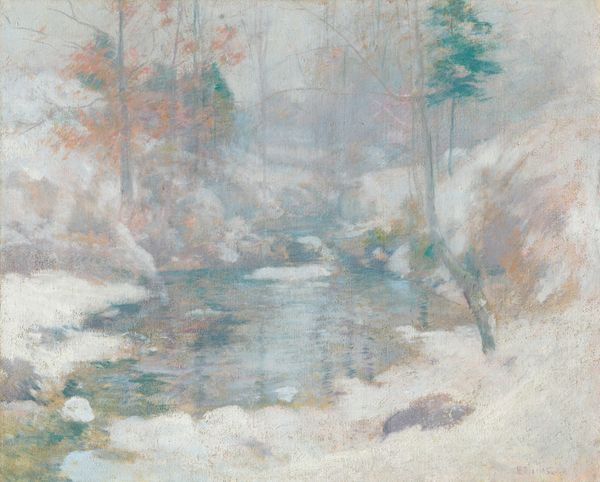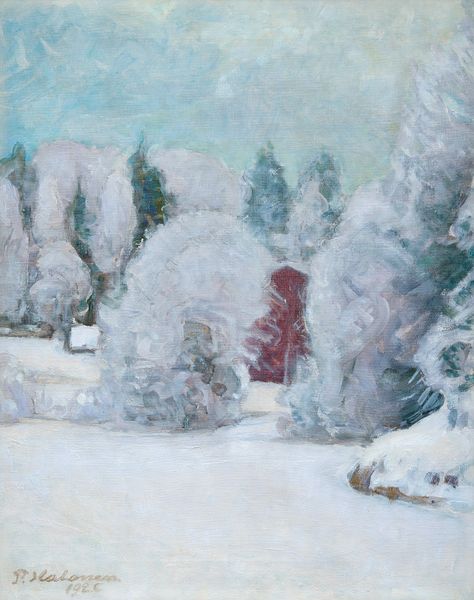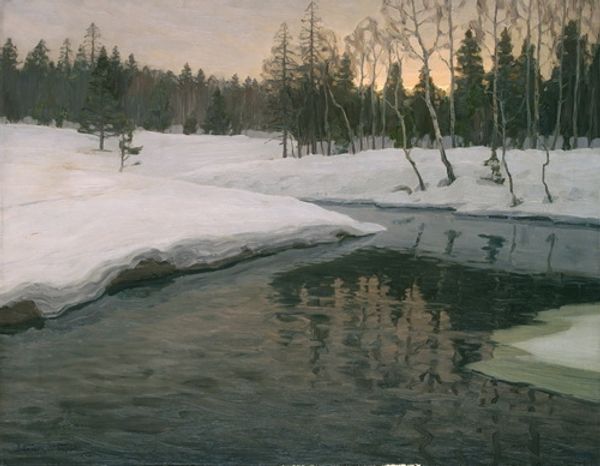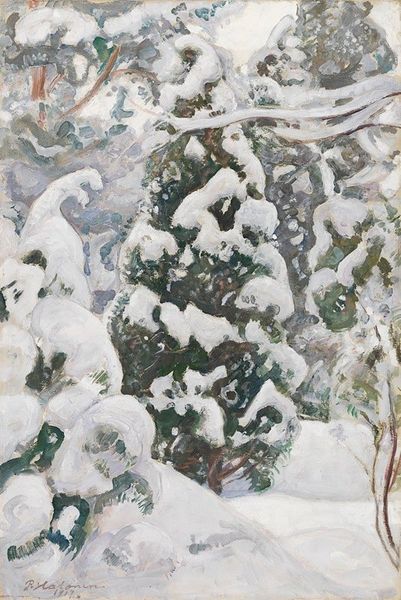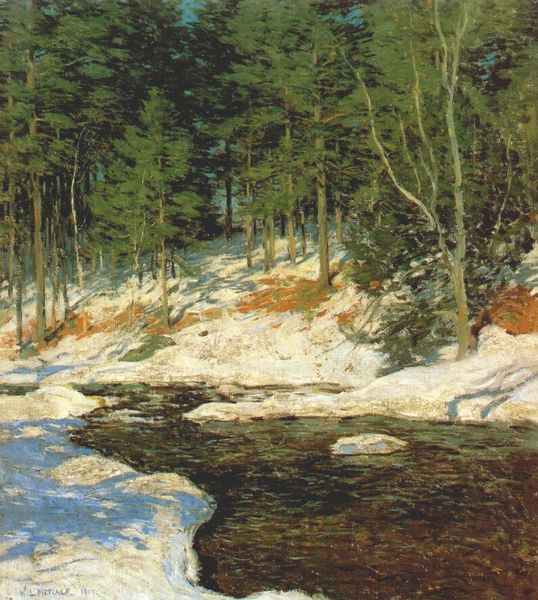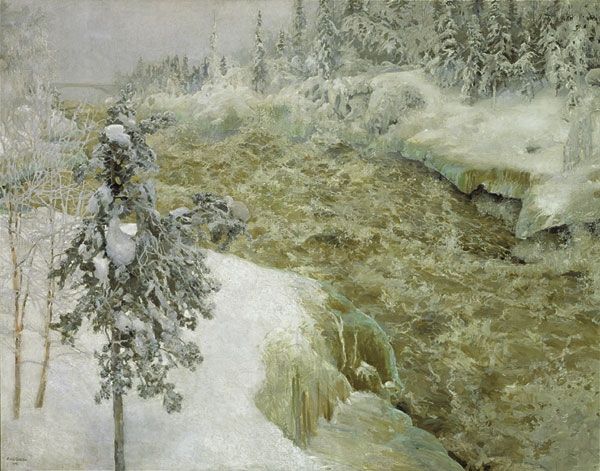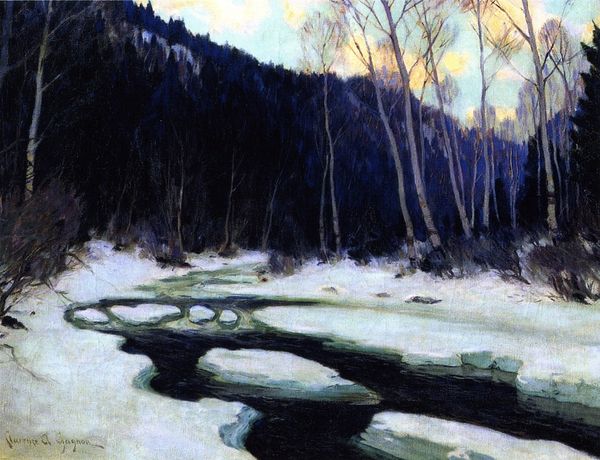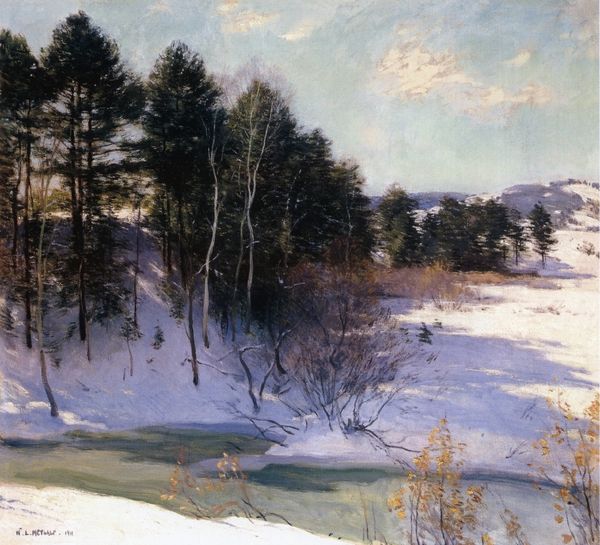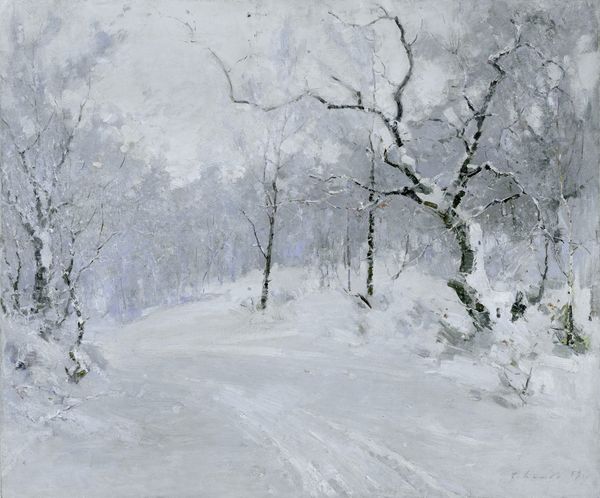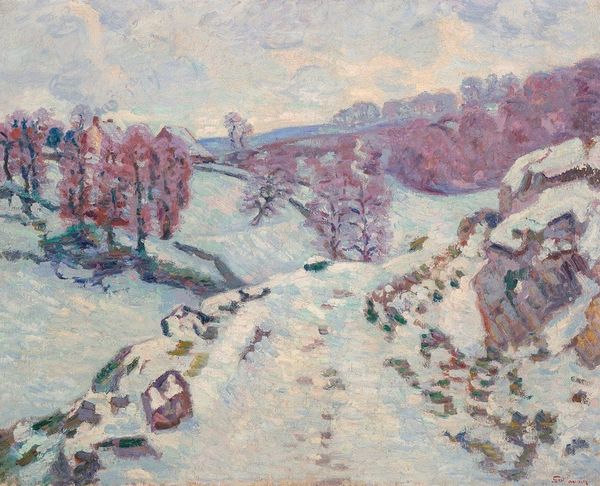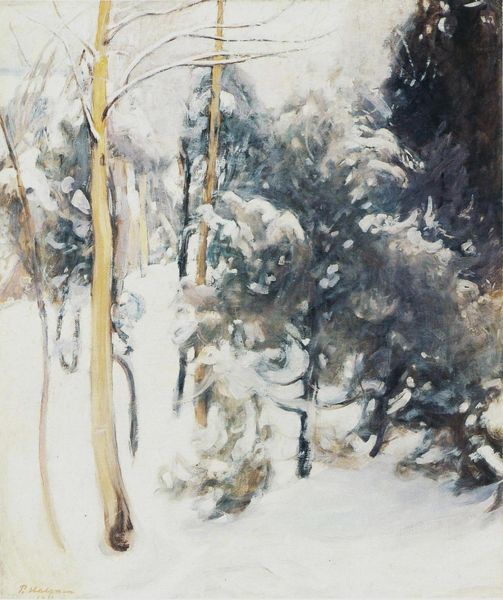
painting, plein-air, oil-paint, paper
#
tree
#
snow
#
painting
#
impressionism
#
plein-air
#
oil-paint
#
landscape
#
paper
#
geometric
#
water
#
painting painterly
#
watercolor
#
realism
Dimensions: 64. 2 × 76.6 cm (25 1/4 × 30 1/8 in.)
Copyright: Public Domain
Editor: This is John Henry Twachtman's *Icebound*, painted around 1889 using oil on paper. It feels incredibly tranquil, like a silent landscape. What do you see in this piece? Curator: Tranquility, yes, but also perhaps a quiet resistance. Think about the context: late 19th century, growing industrialization, and increasing urbanization. Landscape painting, particularly in the Impressionist style, can be seen as a quiet protest against that relentless march forward, a longing for an imagined past and for environmental balance. What does this snow-covered landscape, seemingly untouched, say about our relationship to the natural world? Editor: So, the painting is not just about a pretty landscape. It's about something deeper? Curator: Exactly! It questions the role of nature, especially considering the emerging conservationist movements. Twachtman, through his artistic lens, highlights nature's vulnerability while suggesting its power, persistence, and potential for reclamation. Consider the ice. Ice suggests not only freezing, but also movement and change as temperatures fluctuate. The painting highlights the constant negotiation between humans and our natural world. It brings to the surface the discussions on power, control and respect, that were occurring at that time, which of course are themes we are still grappling with today. How does his Impressionistic style – the visible brushstrokes, the muted tones – contribute to that sense of resistance? Editor: The brushstrokes feel immediate and the muted tones make it seem distant somehow. Curator: Precisely. He uses technique to evoke emotion and meaning, it encourages the viewer to stop, feel and consider our roles in this complex system of living. Editor: That really changes how I see it. It's less a simple landscape, and more like a challenge. Curator: Indeed. And that's the power of art: to question, to provoke, and ultimately, to make us think about the world and our place within it. Editor: I'll never look at a snowy landscape the same way again. Thanks for that new perspective!
Comments
No comments
Be the first to comment and join the conversation on the ultimate creative platform.
